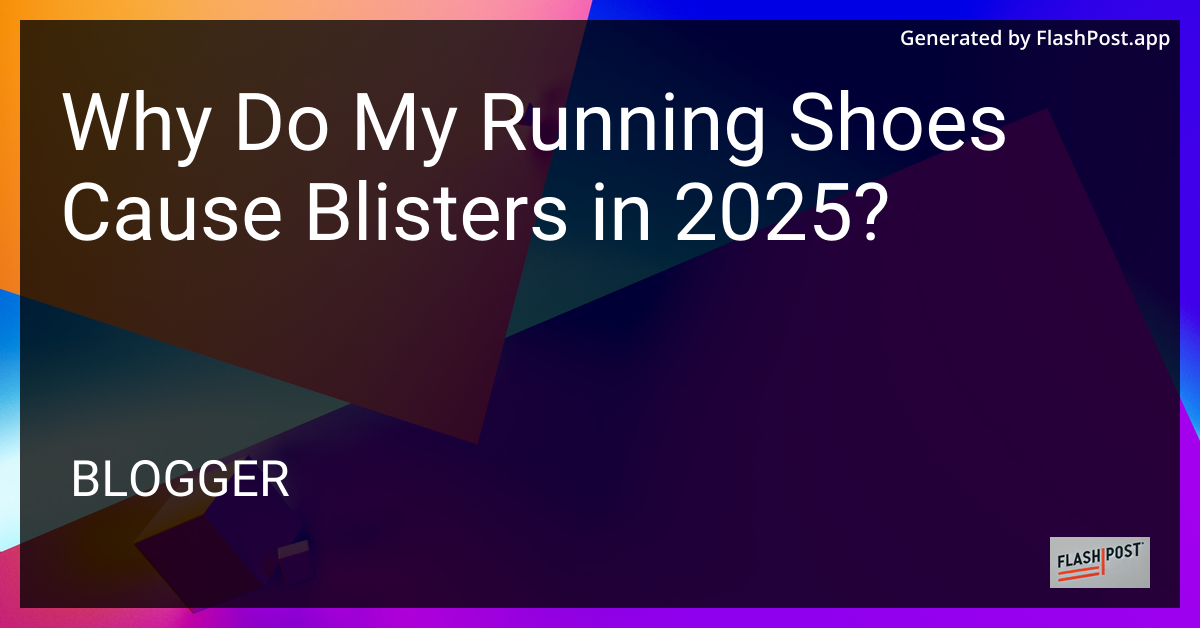Why Do My Running Shoes Cause Blisters in 2025?

Why Do My Running Shoes Cause Blisters in 2025?
Running is an exhilarating activity that promotes both physical and mental wellness. However, nothing is more frustrating for a runner than developing blisters from their running shoes. In 2025, as running shoe technology continues to evolve, the issue of blisters can still plague even the most seasoned runners. Understanding why blisters occur can help prevent them and enhance your running experience.
Understanding Blisters: The Basics
Blisters are fluid-filled sacs that form on the skin due to friction, heat, and moisture. When the surface layer of skin repeatedly rubs against shoes, it causes irritation, leading to blister formation. The main factors contributing to blisters are poorly fitted shoes, inappropriate socks, and insufficient foot care.
Why Your Running Shoes May Be Causing Blisters
Improper Fit: Even with advancements in shoe design, a poor fit remains a primary cause of blisters in 2025. Shoes that are too tight or too loose can cause your feet to slide, creating excessive friction. Make sure your shoes have a snug but not constrictive fit.
Material Concerns: The materials used in your running shoes can affect breathability and moisture management. Shoes lacking breathable fabrics can trap sweat, increasing the likelihood of blisters. For those interested in long-lasting options, durable leather shoes might be a worthwhile investment, provided they offer sufficient ventilation.
Inadequate Cushioning: Shoes with insufficient cushioning can result in uneven pressure distribution, leading to hotspots that escalate into blisters. Opt for shoes with adequate padding around the heel and forefoot areas.
Worn-out Shoes: Old and worn-out shoes can lose their structural integrity, indirectly causing blisters. Regularly check your running shoes for signs of wear and consider replacing them to maintain optimum performance.
Preventative Measures
Choose the Right Socks: Alongside the right shoes, selecting appropriate socks is crucial. Look for moisture-wicking materials that reduce friction and keep your feet dry.
Proper Shoe Storage: Keep your shoes in a condition that preserves their form. Consider storing blankets and shoes under bed to protect them from dust and damage.
Use Ice Cleats: If you’re running in icy or slippery conditions, use ice cleats for shoes to prevent slips and falls, which may exacerbate blister formation.
Regular Maintenance: Regularly clean and inspect your shoes for damage. This precaution ensures your shoes provide the support and protection necessary to prevent blisters.
Conclusion
While technology in running shoes has advanced significantly by 2025, the fundamental principles of preventing blisters remain the same. Ensuring proper fit, maintaining quality shoe materials, and adopting preventative practices can help you avoid blisters and enjoy a pain-free running experience. By taking these steps, you can focus more on pushing your limits and less on dealing with discomfort.
Comments
Post a Comment